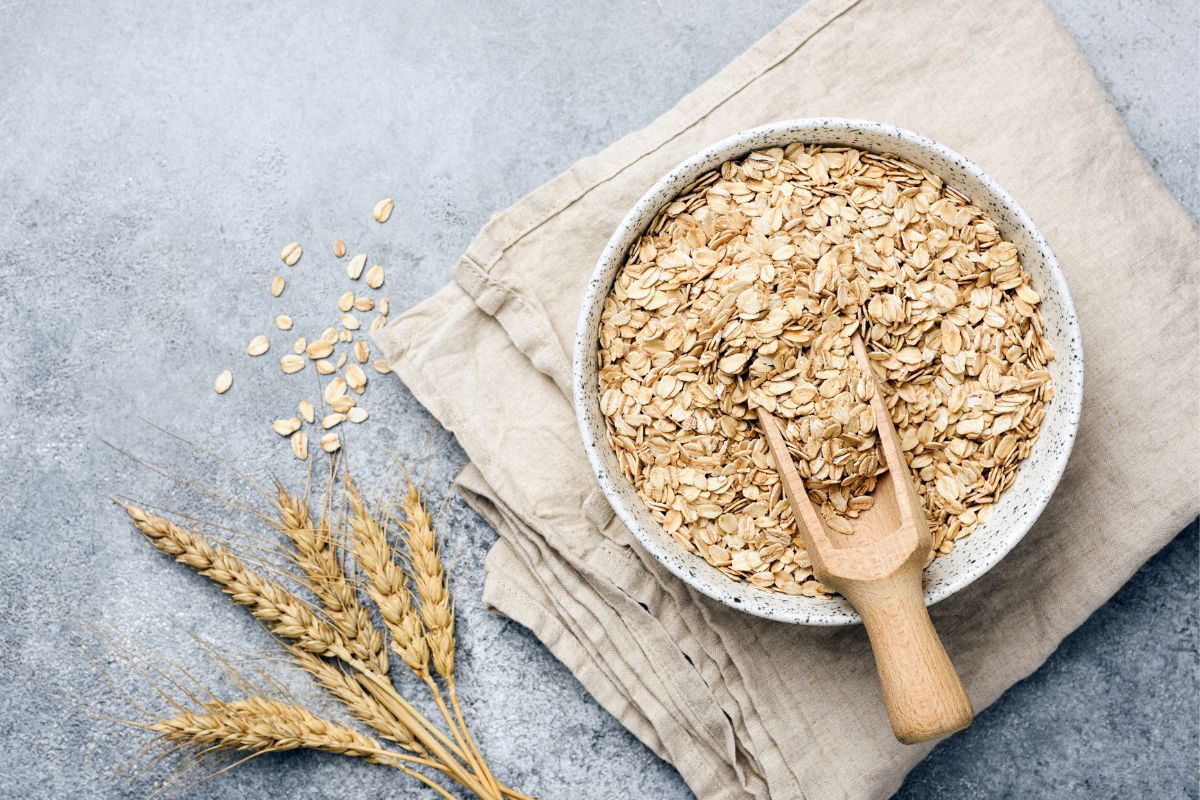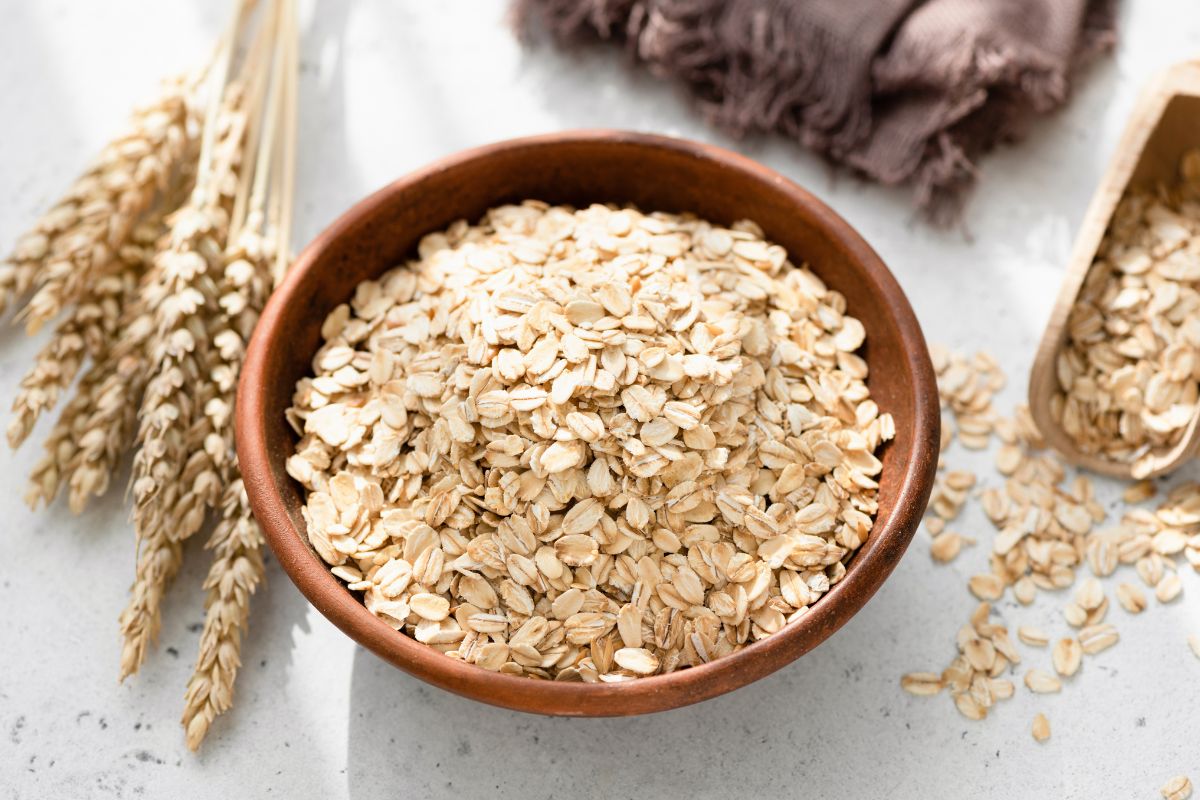Many of us eat them every day for breakfast, in cereal bars or just sprinkled on our lunch or dinner meal, oats are a nutritious addition to our diet.

Harvested from the oat plant, which belongs to the Poaceae grass family, the oats that we eat are the seeds from this widely grown plant.
But how do the oats end up from a farmer’s field in our breakfast bowl? We follow the trail and find out how oats are made.
How Are Oats Made?
A lot of foods, even grains, are often believed to be healthier when they are consumed in their raw state.
However, oats need to be processed before they are edible. This process is called “milling”, which essentially cleans and preserves the grain.
So, let’s jump straight in and explore the different production steps of how oats are made.
Growing Oats
Every grain starts with a healthy plant, and this is no different with oats. Similar to barley and wheat, oat (also known as groat) can grow in large fields all year round.
Typically, oat crops are sewn in spring, and then harvested in autumn. These are called “spring oats”.
But thanks to the resilience of oat plants to cool weather, oats can also be sewn in September, and harvested in spring. Farmers call these oats “winter oats”.
Cleaning
Once the oats have been harvested, they end up in a mill where the first step is to clean them thoroughly.
This removes any unwanted materials, like insects, from the plant. Many mills also use a variety of technology to automate the cleaning process.
Some use a magnetic separator to remove any metals, and they also make use of a rotating screen which helps to eliminate natural materials, like stones or sticks.
As part of the cleaning process, oats then go through a dry stoner where the oat grains are extracted and sorted.
Hulling
Once the oats have been cleaned, they need to go through hulling. Oats are covered by a little shell called hull, which is indigestively.
Therefore, it needs to be removed and this is usually done with rotating discs that shoot the oats towards rotating rings.
The impact causes the hull to fall off without causing any damage to the oat itself. This hull-free oat is now called “groat”.
Once the main hulling stage is complete, the groats are sent through a second round of so-called aspiration where any of the hulls are blown off with air.
In order to make sure that there are no unhulled oats going into the kilning, which is the next step, there is another separation process which separates any unhulled oats that are left from the groats.
Kilning
The name already suggests that there is heat applied to the groats. Actually, the oats now run through a bath of steam and heat which adds the toasted flavor to our breakfast staple (Find out How To Toast Oats Here).
In addition, kilning also prevents any bacteria growth on the oats and it extends the shelf life of the product.
The final, processed oats after kilning look similar to the farro grain.
Oat Processing
This step depends very much on what type of oats (see below) the mill wants to produce.
Some oats are cut into two or four pieces, others are steamed and rolled flat to create oat flakes.
Oat products, such as instant oats, are processed more thoroughly. They go through a number of steaming and rolling steps to make the oats thinner and flatter.
This makes instant oats much easier and faster to cook.
It’s important to understand that the processing of oats is an essential part of making this grain edible.
Without processes such as preparing the oat with hulling and kilning, and then processing it with steaming and rolling, oats would be indigestible.
It would also mean that oats would rot quickly and could produce bacteria making them a health risk.
Oats need to be processed carefully, so that you can get the most nutrients from this delicious grain.
Different Types Of Oats
Do you know the difference between rolled oats and oatmeal?
Oats are usually used to add texture and flavor to meals, and that’s where the different types of oats come in.

For example, oatmeal is perfect for thickening casseroles and soups, whereas pinhead oats are an ideal topping for savory and sweet dishes.
Let’s take a look at the different types of oats that you can use to make your meals more delicious.
Steel Cut Or Pinhead Oats
This type of oats covers all oats that have been cut into small pieces during the production process.
Steel cut oats are sometimes also called Scottish or Irish oats, as this form of oat cutting has been traditionally used in this region.
Jumbo Rolled Oats Or Flakes
This type of oats is softened with steam to give it a much softer texture. They are also flattened between rollers which transform the oats into small flakes.
Rolled Oats
Rolled oats are essentially a combination of Jumbo flakes and steel cut oats when it comes to the production process.
These oats are first softened with steam, and then rolled into a flake shape.
As this type of oats is smoother and finer, it can be added to porridge, cereal bars and biscuits.
Oatmeal
In order to make oatmeal, millers use grooved rolls that break the oats into very fine, small pieces.
This creates a range of different oatmeal grades, from fine oatmeal to coarse oatmeal.
Oatmeal takes a relatively long time to cook and it has a much thicker texture than rolled oats. Still, it was traditionally used for porridge, before the introduction of rolled oats.
Oat Flour
Oat flour is the result of sieving and grinding the oats. Similar to oatmeal, there are different grades of oat flour, from fine and medium to coarse.
Oat flour is ideal for making bread, cakes or other sweet treats.
Conclusion
There are so many different ways that oats can be manufactured, making it suitable for a range of uses in the kitchen.








